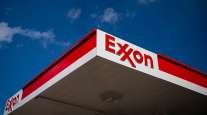Japan Times (Tokyo)
Japan Rushes to Establish LNG Bunkering Hub

[Stay on top of transportation news: Get TTNews in your inbox.]
A United Nations-led call for action to tighten sulfur oxide emissions also may be a trigger accelerating a shift to natural gas as fuel for the global shipping fleet, and Japan is wasting no time trying to establish a refueling hub in Asia.
Some 80,000 vessels worldwide are weighing how to comply with the International Maritime Organization’s new requirements to cut sulfur emissions that take effect Jan. 1. Though the vast majority likely will shift to low-sulfur fuel oil, a growing number of vessels are turning to sulfur-free liquefied natural gas amid heightened calls for curbing emissions.
To spur new demand for LNG bunkering, Japan is subsidizing projects in a rush to build vessels that make ship-to-ship LNG supply possible. Though some places, including Yokohama, allow supply of LNG to ships via trucks and pipelines on shore, LNG-powered ships usually refuel when they stop at ports for unloading or loading goods, making it necessary to build LNG supply vessels.

A Kawasaki Kisen Kaisha Ltd. "K" Line container by Kiyoshi Ota/Bloomberg
More on IMO 2020
Two consortiums of private Japanese firms are planning to launch the nation’s first LNG bunkering ships by the end of 2020. They would provide services in Tokyo Bay and Ise and Mikawa bays in central Japan as the equivalent of a mobile gas station for LNG-fueled ships.
Globally, 170 LNG-fueled vessels operate mainly in Europe, with 184 ships on order, according to the Society for Gas as a Marine Fuel. A total of 10 vessels supply LNG as fuel worldwide, with 19 more on order.
The LNG bunkering ship set to operate in Ise and Mikawa bays will be used to supply gas to two car-carriers ordered by Toyota Motor Corp. to transport automobiles to the United States, said Koji Takasaki, a professor emeritus at Kyushu University. The government-subsidized carriers will begin operations in 2021, he said.
The shipping fleet likely will undergo a revolution in the coming decades, as IMO has, separately, targeted reducing carbon dioxide emissions by 40% by 2030 and 50% by 2050. Experts say this will require a shift to gas-powered vessels. LNG-powered ships curb greenhouse gas emissions by 25% compared with oil-fueled alternatives.
But the regulation on sulfur emissions from 2020 already is having an impact on the shift to gas.
“A clear trend is that shippers tend to place orders on the shipping lines that operate low-greenhouse-emission ships for transporting goods,” Takasaki said. “Even without holding a banner on halving carbon dioxide emissions, the environment-conscious shipping lines are getting more orders, and the competition means that if one company does it, others will follow. So the LNG-powered vessels are set to soar in number.”
A sense of urgency around streamlining LNG bunkering posts is growing in Japan at a time when Singapore, South Korea and China are beefing up such facilities, said Akiko Tanba, general manager of Jera Co.’s LNG bunkering unit.
Jera, a joint fuel venture of Tokyo Electric Power Co. Holdings Inc. and Chubu Electric Power Co., is a member of a consortium that is building Japan’s first LNG bunkering ship.
“Japan is a little behind in LNG-powered ships, but that is about to change with the start of the new regulation from 2020,” Tanba said.
Starting Jan. 1, IMO will curb the sulfur content in marine fuel oil to 0.5% from 3.5% in all general sea areas. High-sulfur fuel oil, which accounts for the vast majority of shipping fuel at present, no longer will be allowed unless ships install costly exhaust-cleaning devices called scrubbers. Scrubber-equipped ships will be able to continue using cheap high-sulfur fuel oil, but the large space needed for scrubbers does not make this an option for small vessels, experts say.
Another option is to use low-sulfur fuel oil, but its higher price presents a disadvantage. The cleanest solution is LNG. The NYK Line and Mitsui O.S.K. Lines Ltd. have introduced Japan’s first LNG-powered tugboats, which are refueled via truck.
The hurdle for choosing LNG ships is the high investment, as they typically cost 20-30% more than conventional vessels, Tanba said.
NYK Line, Kawasaki Kisen Kaisha (“K” Line), Jera and Toyota Tsusho Corp. are set between September and December 2020 to launch Japan’s first LNG bunkering vessel in central Japan, with tanks capable of storing 1,500 to 1,600 tons of LNG, enough to allow a round trip between North Asia and North America.
Tanba said Ise and Mikawa bays will be the only place in Japan allowing three types of LNG bunkering: ship to ship, shore to ship and truck to ship.
Another project, led by Sumitomo Corp., also is planning to launch an LNG bunkering vessel by the end of 2020. An LNG-powered working vessel also is on order by the transport ministry, which is set to begin operations in March 2021.
Elsewhere in Japan, LNG bunkering using a portable LNG tank is being considered at Tomakomai in Hokkaido, and experiments using truck-to-ship LNG bunkering are underway in Kyushu and the Setouchi region in western Japan. Jera is conducting an upgrade at its Kawagoe gas-fired power plant in Saitama Prefecture so shore-to-ship LNG bunkering from LNG tanks will be possible.
These projects all fit into Japan’s strategy to become an LNG hub in Asia. The Ministry of Economy, Trade and Industry is aiming to cooperate with Europe and Singapore in establishing a hub, as Japan is well placed geographically to serve as a refueling station for vessels sailing to North America.
A sense of crisis at the United Nations climate summit last month has provided a tailwind for LNG shipping. The Norway-based classification society DNV-GL estimates that 6-11% of the global shipping fleet is set to shift to LNG by 2025, while the Boston Consulting Group put the projection for 2025 at a range of 5-27%.
The shift could have major repercussions on the global LNG market. Currently, about 300 million tons of fuel oil is consumed annually by vessels. If 10% of that became LNG, for example, it would create new LNG demand of 30 million tons annually, equal to the nearly 10% of 2018 global demand of 319 million tons, according to Shell LNG Outlook 2019.
Despite growing momentum for using LNG, it will not be a remedy in the long term. IMO’s 40% carbon dioxide reduction target for each vessel by 2030 can be achieved by operating LNG ships at slow speeds to get better mileage, but the 50% cut in greenhouse gas emissions for 2050 compared with 2008, imposed on the entire shipping industry, will be a major challenge as additional measures, including using a considerable amount of biofuel, hydrogen or other alternatives, will be essential, Kyushu University’s Takasaki said.
“Though Japan did not play an active role as a major bunkering port for fuel oil,” Takasaki said, “it has a chance to become a major hub for LNG bunkering for global shippers.”
Want more news? Listen to today's daily briefing:
Distributed by Tribune Content Agency, LLC




